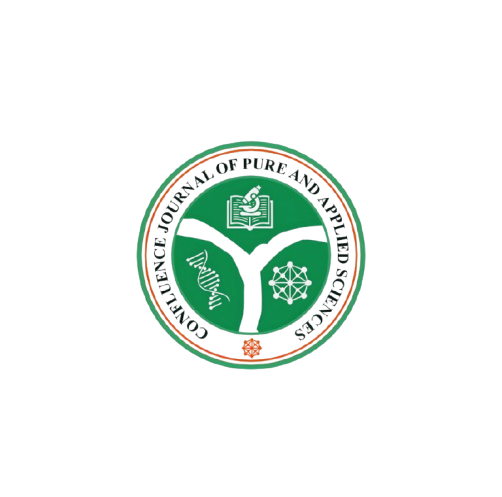ANTHOCYANIN DYES AS ALTERNATIVE PHOTOSENSITIZERS FOR TiO2 DYE-SENSITIZED SOLAR CELLS (DSCs)
Keywords:
Anthocyanin dyes, light harvesting efficiency, molar extinction coefficient, optical band gap, TiO₂-DSCAbstract
Natural dyes from Hibiscus sabdariffa, Delonix regia, Acalypha wilkesiana and Ixora coccinea have been extracted employing the simple solution aqueous method without any chemical treatment. Their pH values were measured using TechmelpH meter and their optical properties before and after adsorption ontoTiO2 photoelectrodes were investigated employing UV-Visible spectrophotometer (model UV-750) in the wavelength range 210nm to 1100nm. Our choice is tied to the fact that natural dyes have better molar extinction coefficient and are environmentally benign. In this study, we present the results obtained from pH measurement and optical characterization before and after adsorption onto TiO₂ photoelectrodes.The measured pH values for the dye extracts extends up to about 5.0 revealing the dye molecules to possess more OH groups with long bond lengths. Absorption maxima were observed in the region332nm to 455nmfor the dye extracts,but upon sensitization, there was reduction in absorption intensity which broadened towards the longer wavelengthsdue to weak bonding of anthocyanin molecules in the dye extracts to the oxide surface. The light harvesting efficiency values for the dye extracts are almost close to unity but gradually reduce after adsorption onto TiO₂ photoelectrodes with the bandwidth in the range of 150nm to 200nm. The calculated molar extinction coefficients were found to be high with values ranging between 102,902M-1 cm- 1to159,837M-1cm-1with Delonix regia having the highest value. Finally, it was discovered that TiO₂ band gap was reduced upon sensitization with the extracted dyes. The value ranges between 2.03eV to 2.40eVwith the least difference occurring for Delonix regia sensitized TiO₂ photoelectrode.
Downloads
Downloads
Published
Issue
Section
License
Copyright (c) 2018 Confluence Journal of Pure and Applied Science

This work is licensed under a Creative Commons Attribution 4.0 International License.



